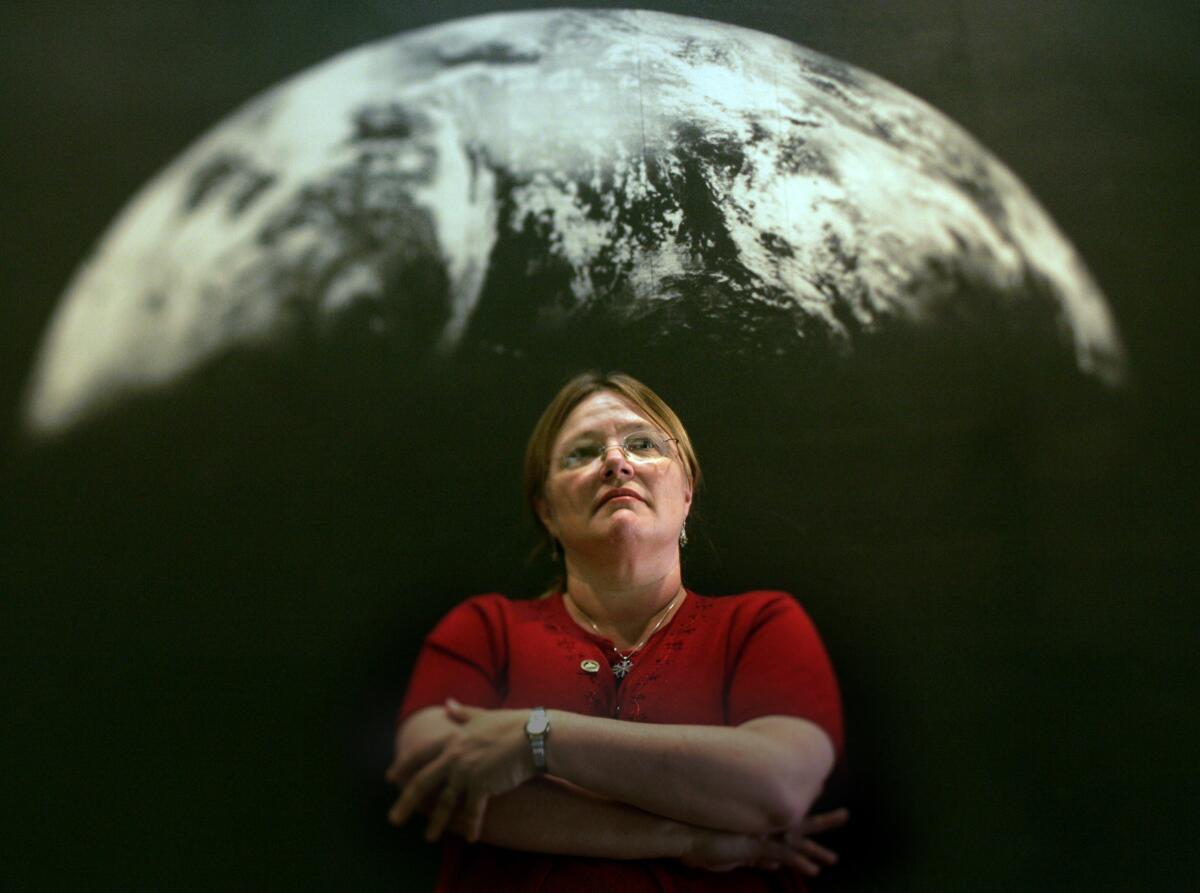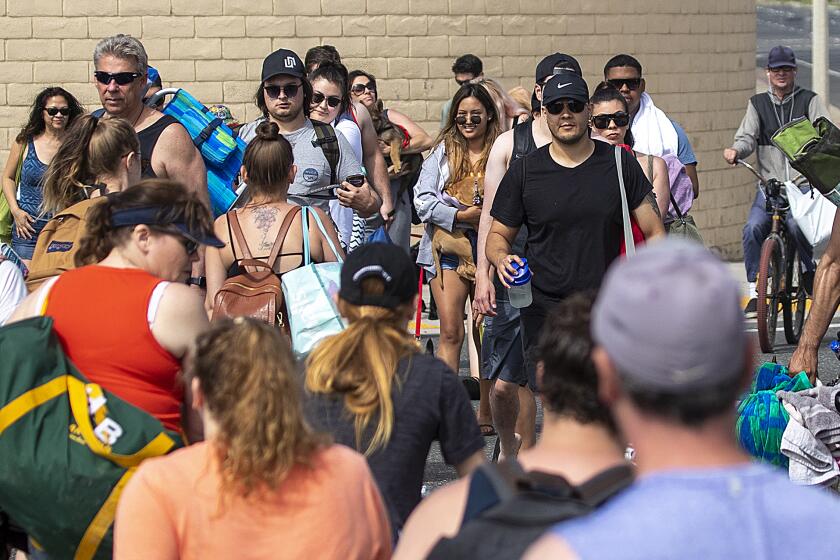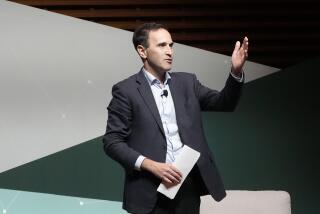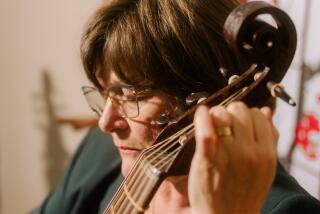Who doesn’t trust Lucy Jones in a crisis? Here’s what she has to say about the coronavirus pandemic

Who wouldn’t trust Lucy Jones in a disaster? For more than three decades, she kept Southern California grounded whenever the earth shook.
She explained complex science to us in ways that helped us understand. When we got scared, she talked us down without ever talking down to us.
Our most famous seismologist managed in years of Great ShakeOut drills to drill into us one key earthquake response. If you do nothing else, we learned from her, follow these basics steps: “Drop! Cover! Hold On!”
She has a similarly clear message on the coronavirus — one that I think we should all be listening to now as our state confronts a new surge in infections from a disease that we know people can carry and spread without showing any symptoms at all.
“Don’t share your air,” she says. Wear a mask around others. Maintain distance. Simple as that.
When I first heard Jones utter those words this week on her new podcast, “Getting Through It,” I thought: Why in all the public messaging we’re getting has no one else come up with a directive so straightforward, so spot on, so easy to remember? (She cut right through all the static on that question, too. Give me a minute and I’ll get to that.)
Just because it’s simple, by the way, doesn’t mean her mask message is simplistic. Seismology is her specialty, but she’s a scientist through and through. And so she’s approached the coronavirus epidemic with her scientist’s mind: methodically sorting through the studies and the case data. (Poring over statistics calms her down when she’s scared, she told me.)
And the essence of what all the scientific research on COVID-19 cases is telling us really isn’t up for debate, she said.“There’s lot of ways you could get it, but most people are getting it from breathing in the air of an infectious person. If you can’t protect yourself from everybody else’s air, what you can do is keep your air from getting out to others.”
Here’s how that works, she explains in her podcast: “There are these tiny, tiny droplets that are carrying the virus … Putting a mask on your face, think of how it fogs up your glasses. That’s the moisture carrying the virus getting caught and not going out to infect someone else.”
Caught in the masks, she goes on, the droplets also condense and thus grow heavier and drop more quickly — and thus more safely — out of the air.
It’s also worth noting, she says, that it’s easier not to share your air outside. She notes that the states that got hit hardest first were “cold places” where you mostly had to stay inside in those early months. And some of the states being hit hardest now are hot places, where people are now retreating indoors from the heat.
Given all that, if you have to focus on one key, make-or-break message, she thinks, the one that can make the most impact is: Don’t share your air.
And it really helps, she said, to focus on one clear message.
Jones has learned from her longtime role as a disaster communicator that in a crisis you can’t give people a list of dozens of measures to take for their safety. If you do, you might well overwhelm.
Overwhelmed, people often toss up their hands and say, I can’t do all you’re asking of me, and so I’ll do nothing at all. And doing nothing in our current crisis just isn’t an option, she told me. “Throwing up your hands is saying, ‘I’m OK with a lot of people dying.’”
Back to the question of why we haven’t seen much Jones-style crystal-clear messaging, why the messages have seemed to change over time, why a lot of people have as a result gotten confused. To me, confusion feels like one reason, why some people may not be masking up. They stopped trying to keep track of the changing advice. They tuned out. They walked away — unmasked — from all of it.
Messaging mistakes certainly have been made along the way. And the absence of national leadership to define and model and rally people around a consistent public-health message has hurt us immeasurably.
But you have to understand how science works to understand why what guidance we have gotten this spring seems to have come out untidily, in dribs and drabs, Jones told me. Science doesn’t work like a carnival fortune-telling machine: Push a button, learn your fate. You can’t ask a question and get an immediate answer if no one previously has thought to pose the question you are asking and then study it.
Trust is key as we reopen with the coronavirus still present
Because this was a new virus, she said, experts had no research available on it when the outbreak hit. So the first advice they gave out was based on what they’d learned from past diseases: Maintain distance from others, wash your hands often. That’s still sensible, but the fine tuning had to wait for the data to come in and then be processed and vetted.
And speaking of vetting, Jones told me she wishes our science and math education gave many more of us the skills to do it. She wishes more people learned about the process of science, about what goes into determining whether information is valid or invalid.
“It’s pretty clear we are suffering from our inability to use science in decision making, said Jones, who is now retired from federal service and running the Dr. Lucy Jones Center for Science and Society, whose prime aim is to reverse that trend and help communities grow stronger by incorporating scientific facts into their policymaking.
Scientific reality, Jones would like you to know, is not subjective. And scientists have seen from the start that the coronavirus’ spread can grow exponentially (if each person infects two others, one victim infects two more victims, who infect four victims, who infect eight victims and so on) if we don’t do all we can to try to keep that from happening.
“You can believe all you want that the apple is going to fly into the air and gravity still pulls it to the ground,” she told me. “The thing about the pandemic is people are going to die whether you believe in it or not.”
But over the years — starting with the lobbying against findings on the health risks of smoking, followed by the lobbying against scientific evidence of climate change — “we’re now in this position where scientific information is treated as something that you believe or don’t believe because of your partisan leanings. We’ve become a society that has developed an immunity to science, that has said, well none of these guys can be believed.”
That obviously makes finding the right messages to reach people increasingly difficult. And more difficult still, Jones points out, is what’s at the heart of the message about the importance of wearing masks — that it’s not about our individual needs but about our collective safety, that it requires a willingness to “put our common good in front of our personal discomfort.”
If anyone can convince the reluctant to do that, in my opinion it’s Jones, who so many of us have trusted for so long.
She is 65 now. She’s eagerly awaiting her first grandchild. She could be focused on that. But she’s still out there, as she’s been so many times, generously trying to get us through a crisis.
It’s a catastrophic disaster, far bigger than any we’ve faced before, she said — bigger than the biggest earthquake because it’s happening everywhere at once. And to use an earthquake analogy we should all understand by now thanks to her, “it’s still in the foreshock sequence.”
By our individual actions, by wearing masks around others, we can still help reduce the size of the mainshock.
More to Read
Sign up for Essential California
The most important California stories and recommendations in your inbox every morning.
You may occasionally receive promotional content from the Los Angeles Times.












